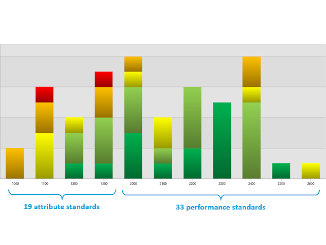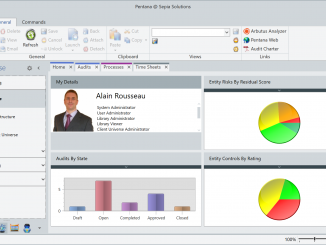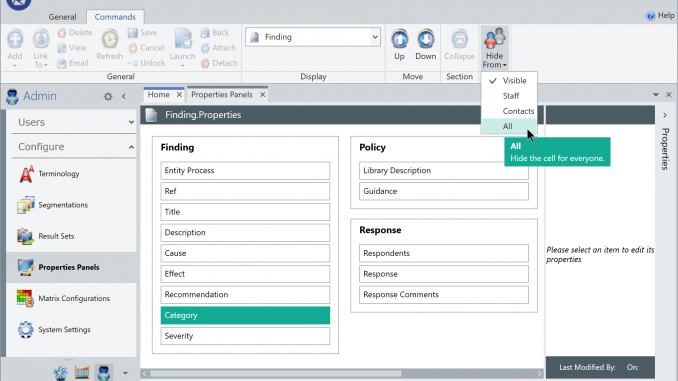
This page introduces some of the versatile configuration options in Pentana, such as:
Terminology
Terminology / aliases
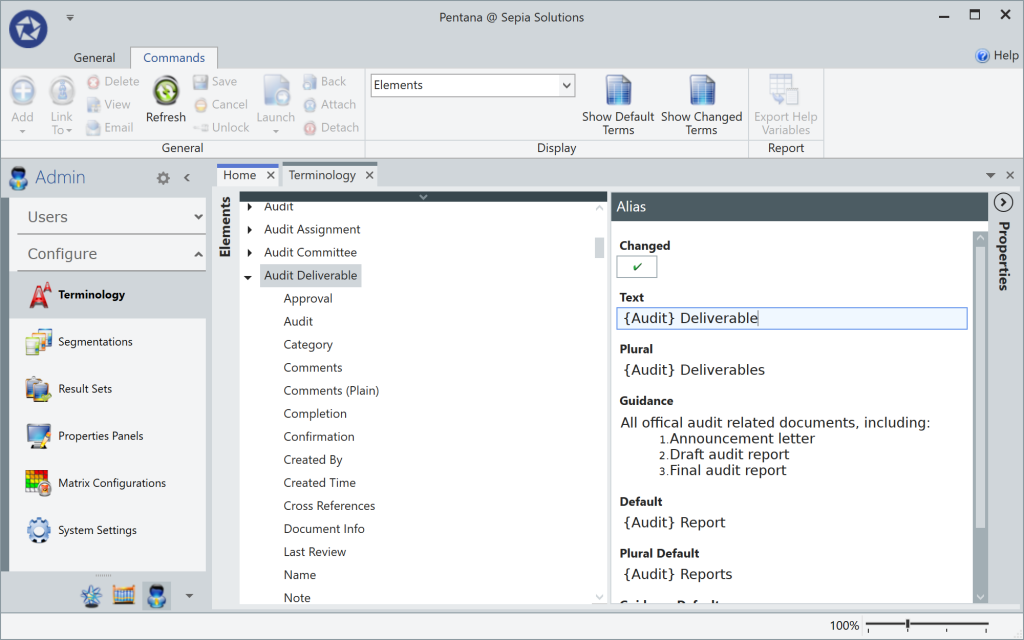
The Terminology module allows the users to change the names of all items, such as the components, the individual fields and even the navigation buttons.
An “Audit” could be labelled to “Investigation” or “Project“, while a “Finding” could be changed to “Issue” or “Observation“. Individual fields could be renamed and even given tooltip style guidance. Key users make these changes without programming skills or technical background.
Segmentations
Segmentations / Pick lists
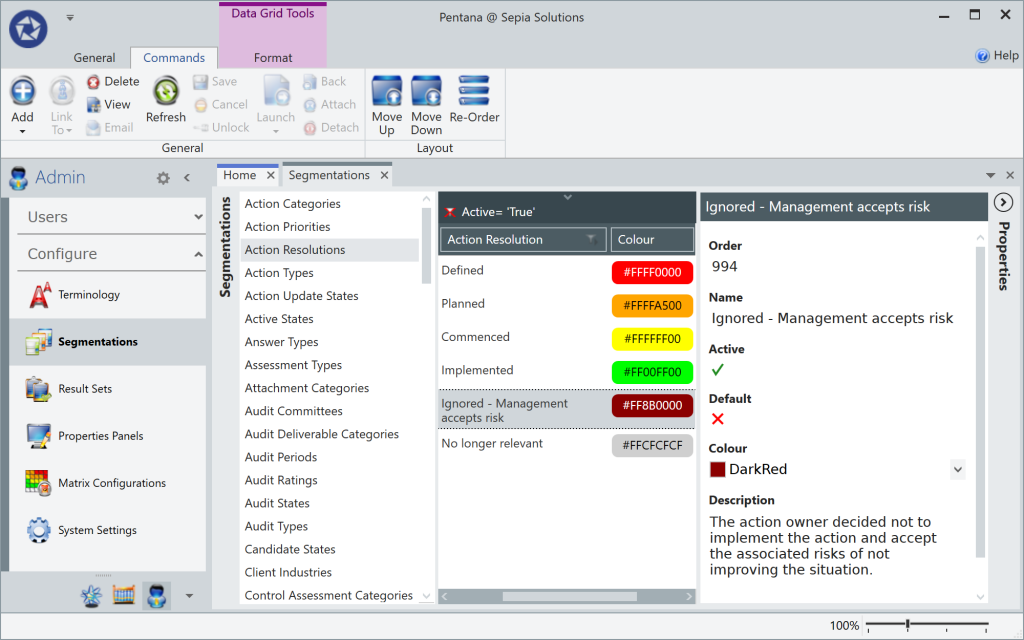
The “Segmentations” (also known as pick lists, radio buttons, selection values, etc.) can be managed through the Segmentation screen.
Most segmentations include additional fields such as Order, Name, Description, and Colour. The Name is the key value to group the data by, Description is displayed when the user is considering the value to set and the Colour can be used in the graphical reporting.
Again, this entire configuration can be done by the key users through the standard user interface.
Properties panel
Move fields, or hide fields and simplify the interface
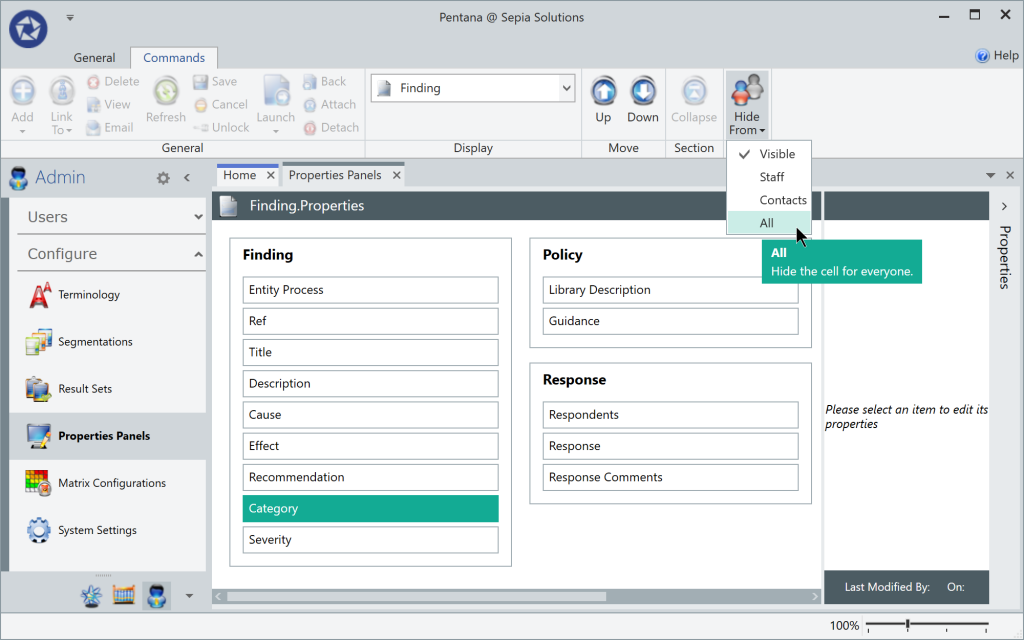
In addition to changing labels and pick lists, the entire layout of the Properties Panel can be modified.
Key users can hide fields from the Properties Panel, move fields around (within each section), reorder the sections, and “collapse” less frequently used sections by default.
This way the interface can be made “lean” by hiding all the unused fields (i.e. deadwood) and more in line with your organisation’s way of working or the legacy system Pentana replaces.
Permissions
Access to data
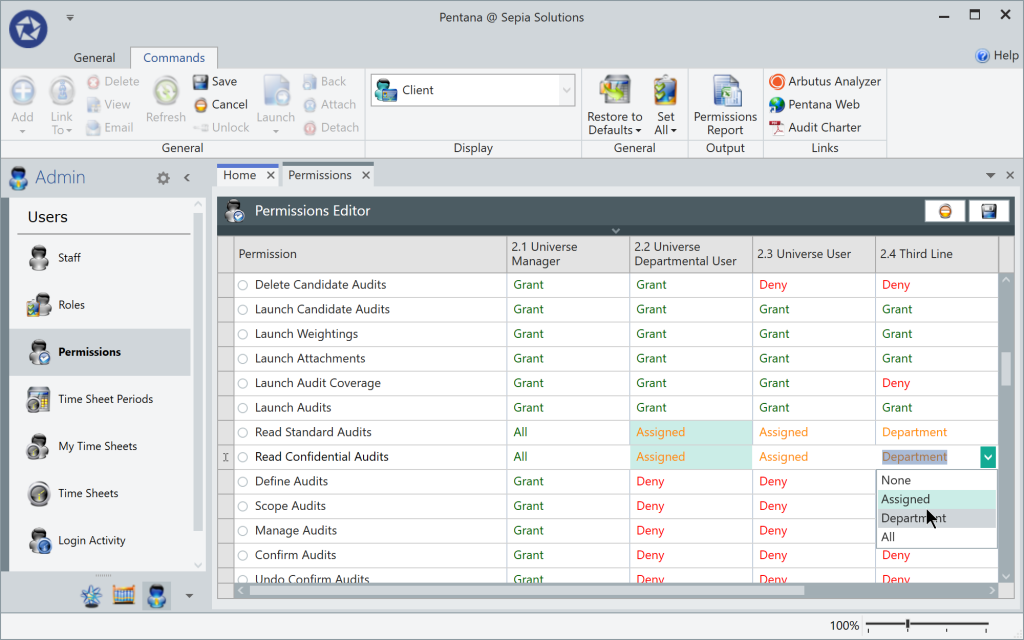
Pentana includes 5 to 6 Roles for each of the four levels (Universe, Client, Entity and Audit) at which they are defined. Staff Users as well as Contact Users are linked to those Roles.
These Roles themselves can be modified by the key users by changing potentially hundreds of detailed options that define what (if any) access that particular Role has to certain elements (e.g. Entities, Incidents, Audits, Findings, Tests, Actions, etc., etc., etc.).
Access to modules
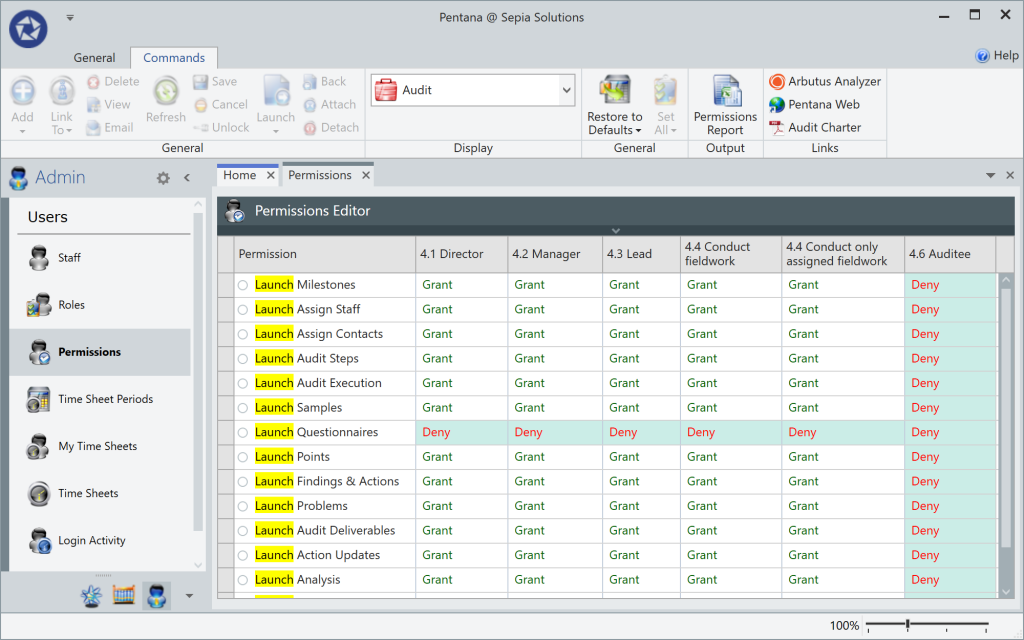
Just as the Roles and Permissions are used to configure which users can access certain data, the same is true for the functional modules.
Each of the available modules in Pentana can be turned on/off by changing the Permissions. This is perfect way to simplify the user interface by hiding unused functionality.
It would be perfectly reasonable and feasible to grant key users access to 60+ modules, while certain business contacts, compliance officers or junior auditors can access say only 6 different screens.
System settings
Under the hood
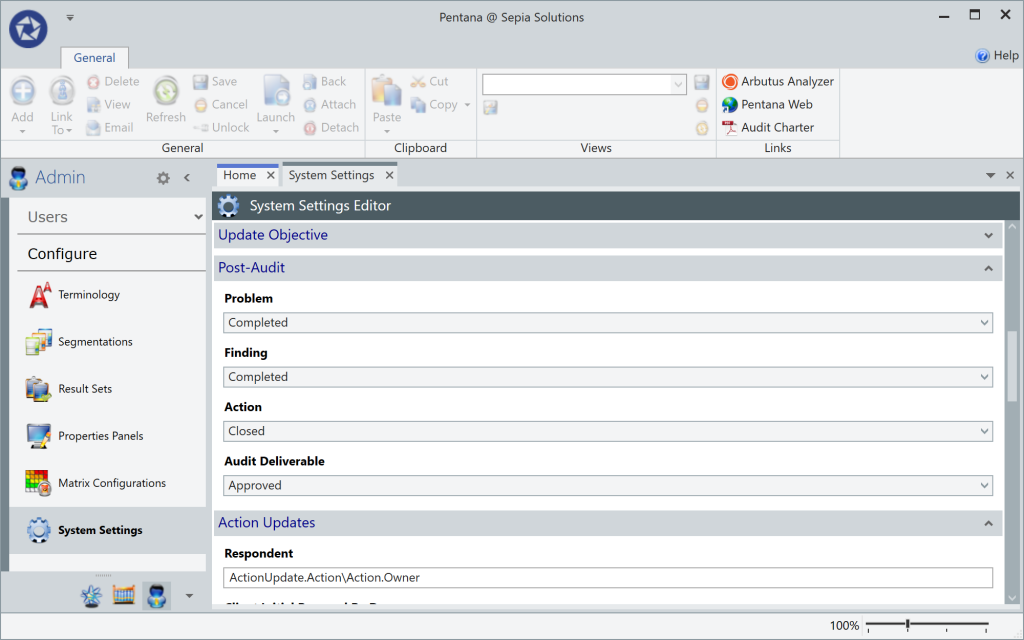
Certain Server Settings have also been exposed to the key users. Examples include the “from address” emails as sent from, the number of risk impact assessments, the number of hours in a working day, whether ORCT elements are automatically retrieved into new Audits, etc.
Pentana contains 250+ System Settings; the standard interface exposes 150+ of those. Sepia Solutions will of course assist clients making the necessary configuration changes, typically during the project implementation phase
We can tell you so much more!
Sepia Solutions specialises in this software and has a proven track record of successful implementations. This website documents just the tip of the iceberg. Invite us for an on-site presentation for a more interactive demonstration of the Pentana software. We can discuss your organisation, department and objectives to come to a tailored implementation plan.
No costs, no obligations, only additional insights.

